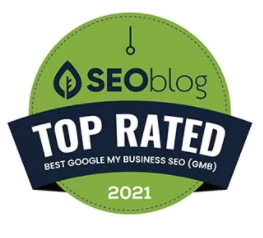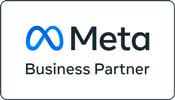
If you want to promote your business, you need to invest in marketing. However, how can you tell which methods are working the most? If you don’t know, how can you keep moving forward?
Thankfully, digital marketing isn’t just a guessing game where you throw darts and see what sticks. Instead, you can look at specific metrics that illustrate the positive (or negative) impact various marketing strategies have on your bottom line.
So, with that in mind, we’re going to take a closer look at the five most valuable marketing KPIs you should pay attention to for your brand.
What is a KPI?
KPI stands for Key Performance Indicator, which is a fancy name for some kind of quantifiable metric. For example, a KPI could be the number of products sold in a given month. If one month you sold 100 products and then sold 150 the next month, you have a growth rate of 50 percent. Overall, KPIs are designed to measure progress, and they should focus on core elements of your business (hence the word “key”).
Without KPIs, it’s impossible to tell whether your actions are making progress or not. Unfortunately, marketing KPIs are a bit harder to figure out because marketing itself is somewhat abstract. However, by focusing on the right numbers, it’s easier to tell whether specific strategies are yielding the results you want.
The Most Important KPIs
#1 Bounce Rate
This KPI has to do with your website, and it refers to how many people leave (or “bounce”) from your pages once they land on them. If you have a high bounce rate, it could indicate a few problems, such as:
- Unclear call to action
- Slow loading speed
- Unattractive landing pages
- Incorrect or confusing information
Because your bounce rate can have multiple triggers, it doesn’t provide accurate insight upfront. However, what you can do is pay attention to your bounce rate after making specific changes.
For example, if you think that your site is loading too slow, you can increase page speed and see if your bounce rate goes down. If it stays constant, you know that something else is making people leave.
#2 Conversion Rate
Your marketing conversion rate is the number of leads who turn into paying customers. For example, if 100 people visited your website and only five of them bought something, your conversion rate is five percent.
As with a bounce rate, there can be many problems that lead to a low conversion rate. Some issues can include:
- Complicated buying process
- High prices or shipping costs
- Subpar customer service
- Lack of information or follow-ups
Again, you can focus on one potential problem to see if it boosts your rate. If not, you can address the next issue and see what happens.
#3 Cost Per Conversion
CPC is a valuable KPI because it attaches a dollar amount to each of your new customers, and particularly valuable in PPC campaigns. While CPC is helpful, it has to be compared to the average order value per customer. For example, if a new customer spends an average of $200 and your cost-per-conversion is $150, you only make $50 on that transaction, not including any operational or material costs.
Determining your CPC can be somewhat complex because you have to account for labor and other expenses. For example, how many hours does it take a salesperson to convert a single lead? How much did you spend on a marketing campaign to reach that lead?
Once you figure that out, CPC can help you figure out if you’re getting a good ROI on your marketing methods.
#4 Organic Searches
Search engine optimization is a valuable marketing tool, but are you getting the most from your SEO strategy? One way to tell is by measuring the number of organic searches. This KPI shows you how many people visited your site or landing page from a search engine, not a link.
As with CPC, it can be tricky to separate organic searches from the rest of your site traffic, but doing so will give you valuable insight into which marketing channels deliver the most leads.
#5 Social Media Engagement
As with SEO, social media marketing is an excellent way to find new leads and customers. When looking at engagement, don’t focus too much on “vanity metrics,” such as the number of likes and followers. Instead, pay attention to actions, such as shares, comments, and clicks. For example, one post with 10,000 likes and zero shares is less valuable than a post with 100 likes and 5,000 shares.
Overall, the more engaged your users are on social media, the more likely they’ll become customers.
Find and Hit the Right KPIs For Your Business with BizIQ
Do you need help managing digital marketing campaign? Work with the digital marketing professionals at BizIQ to improve your campaign today.
Measuring KPIs can be a full-time job, particularly if you don’t know how to aggregate the data and develop action plans. Fortunately, BizIQ has the tools and expertise to ensure that you get the most out of every KPI. We can even help you determine the best KPIs for your brand. Contact us today to find out how!









